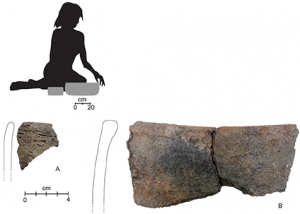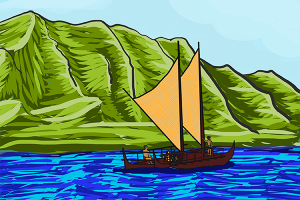Guampedia’s Micronesia and World Milestones
Micronesia Milestones Lesson Plan: Connecting Personal History to the Histories of Others
A Journey through 4,000 Years
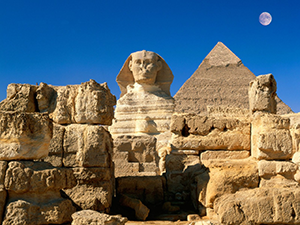 The Great Sphinx of Giza, literally Father of Dread, is a limestone statue of a reclining sphinx, a mythical creature. Facing directly from West to East, it is on the west bank of the Nile in Giza, Egypt. It is the oldest known monumental sculpture in Egypt.
The Great Sphinx of Giza, literally Father of Dread, is a limestone statue of a reclining sphinx, a mythical creature. Facing directly from West to East, it is on the west bank of the Nile in Giza, Egypt. It is the oldest known monumental sculpture in Egypt.
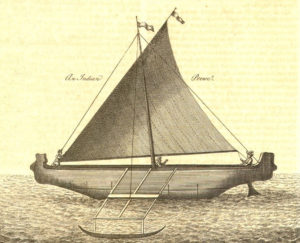
CHamoru Proa from the
Guam Public Library System collection.
The Marianas are home to one of the oldest Pacific Island cultures. The Marianas were settled by seafaring peoples from Island Southeast Asia more than 3,500 years ago. It is uncertain whether the islands were settled in waves of migration or all at once, though it is known that the Marianas were continuously occupied by people who became known as CHamorus.
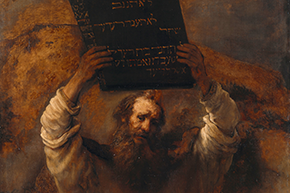
The Ten Commandments, also known as Aseret HaDibrot (“Ten Sayings” in Hebrew) or Decalogue, are the first ten of the 613 commandments given by God to the Jewish people. They form the foundation of Jewish ethics, as well as civil and religious law. These commandments are mentioned twice in the Torah—once in Exodus and again in Deuteronomy.
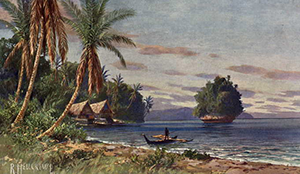
The Palauan archipelago was settled in a series of migrations originating from Island Southeast Asia around 1100 BC. Palau’s geographic location made it an easy stepping stone into the Pacific from Asia.
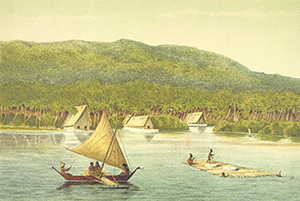
The first settlers in Yap were ancient peoples from the Malay Peninsula, the Indonesian archipelago, New Guinea, and the Solomon Islands. Some of the people of Yap’s neighboring islands are descendants of Polynesian settlers and as such, have significant ethnic dissimilarities from the people of the Yap main islands.
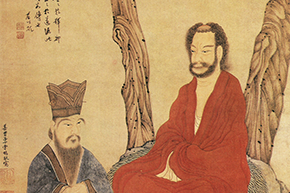
Lao-tzu, founder of Taoism, was born in 604 BC. Lao-Tzu, also Laozi, (literally “Old Master”) was a Chinese philosopher and writer. He was a scholar, the Keeper of the Archives for the royal court, and is the reputed author of the Tao Te Ching, the foundation of philosophical Taoism. A semi-legendary figure and contemporary of Confucius, Lao-tzu is a deity in religious Taoism and traditional Chinese religions.
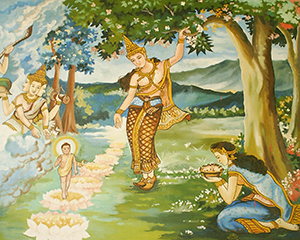
Siddhartha Gautama, the founder of Buddhism, was born in what is modern day Nepal. Gautama is the primary figure in Buddhism. He is believed by Buddhists to be an enlightened teacher that attained full Buddhahood.
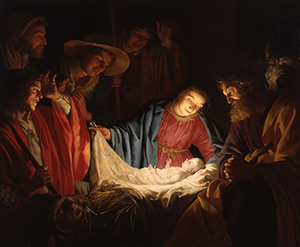
Jesus of Nazareth, the founder of Christianity, was born around 4 BC. Jesus is a religious leader revered in Christianity, one of the world’s major religions. He is regarded by most Christians as the incarnation of God.
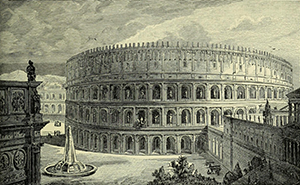
The Colosseum, also known as the Flavian Amphitheater, opened to the public around 80 AD. The massive stone amphitheater was commissioned by Emperor Vespasian of the Flavian dynasty as a gift to the Roman people. Vespasian’s son Titus opened the Colosseum with 100 days of games, including gladiatorial combats and wild animal fights.
Kiribati was first inhabited by Micronesian people about 500 AD. Later, invasions by Samoans and Tongans introduced Polynesian elements into the culture and invasions by Fijians introduced Melanesian elements too.

Ancient people settle Chuuk, Pohnpei, Kosrae from Island Southeast Asia, Melanesia and West Polynesia in different waves of migration. These islands were inhabited for at least 1,000 years before they were visited by European explorers.
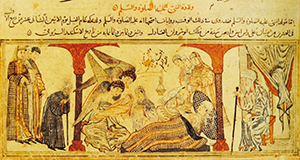
Muhammad was born at Mecca, Arabia (now in Saudi Arabia). He is the founder of Islam and the proclaimer of the Qurʾān. According to Islamic doctrine, he was a prophet and God’s messenger, sent to present and confirm the teachings preached previously by Adam, Abraham, Moses, Jesus, and other prophets.
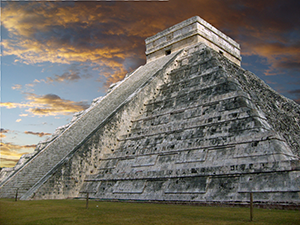
Chichen Itza, a large pre-Columbian city, was built by the Maya people around 750 AD. The archaeological site is located in Tinúm Municipality, Yucatán State, Mexico.
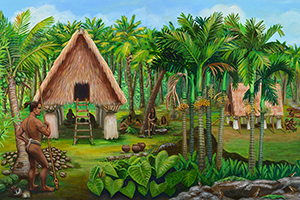
More than 1,500 years after the Marianas were first settled CHamorus developed latte, comprised of a stone pillar and a stone capstone. Latte were erected in two parallel rows of six to ten pillars and used as building foundations.
Nauru is settled by ancient people from both Micronesia and Polynesia. There are 12 traditional clans or tribes which are represented in the 12-pointed star in the nation’s flag. Nauruan society, like other Micronesian cultures, traces descent on the matrilineal, or female, line.
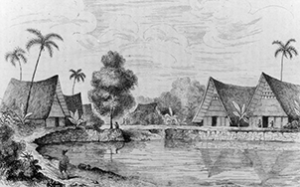
Two ancient stone settlements, Leluh in Kosrae and Nan Madol in Pohnpei, were governmental centers and home to kings and high chiefs.
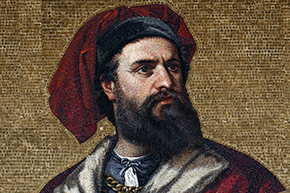
Marco Polo, a Venetian merchant, journeyed across Asia at the height of the Mongol Empire. Marco Polo remained abroad for 24 years. Though not the first European to explore China he became famous for his travels thanks to a popular book he co-authored while languishing in a Genoese prison.
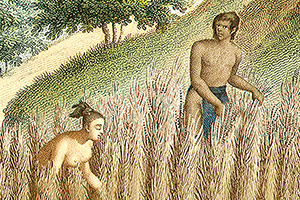
Early historic accounts about the Marianas say rice was produced in large quantities in pre-Spanish times. It was used as a commodity for trade between islands and later, with the Europeans to obtain metal and other goods. The CHamorus were the only Pacific Island people known to have cultivated rice dating back to pre-contact times.
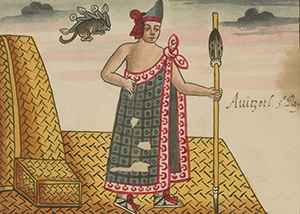
The Aztec Empire, or the Triple Alliance, began as an alliance of three Nahua altepetl city-states: Mexico-Tenochtitlan, Texcoco, and Tlacopan. It reaches its peak under the rule of Ahuitzotl.
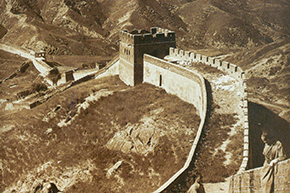
The Ming emperor orders rebuilding of the Great Wall as protection against northern invaders. Building the Great Wall began when fortifications, built by various states from 771 BC on, were connected by the first emperor of China, Qin Shi Huang, to protect against incursions by nomads from Inner Asia.
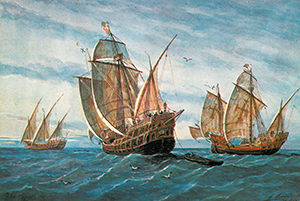
Christopher Columbus, an Italian explorer and navigator, completes four voyages across the Atlantic Ocean under the auspices of the Catholic Monarchs of Spain. Columbus first left Spain in August 1492 with three ships, making landfall in the Bahamas.
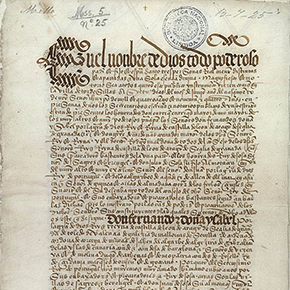
The Treaty of Tordesillas is signed by Pope Alexander VI, dividing the world between Spain and Portugal. The Mariana Islands are placed on the Spanish side.
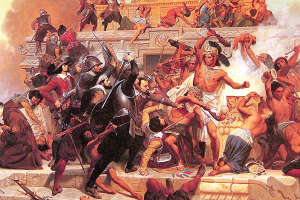
The Aztec empire flourished between 1345 and 1521, dominating ancient Mesoamerica. But Hernan Cortés, with his formidable firearms and thirst for treasure, brought devastating destruction and disease, along with willing local allies.
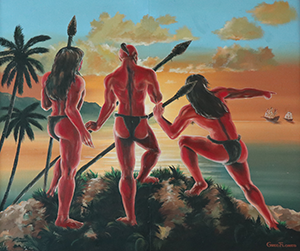
The first European encounter for CHamorus in the Marianas was with Spain’s Ferdinand Magellan and his crew aboard three ships attempting to circumnavigate the world.
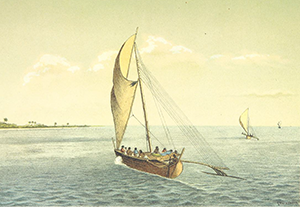
Spanish explorer Álvaro de Saavedra came across the Marshall Islands on an expedition to find new lands in the Pacific and to bring back spice plants to Europe. He sailed from Mexico to the Philippines, making him the first European navigator to cross the Pacific Ocean from the Americas.
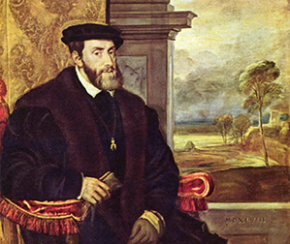
This peace treaty did not modify the line of demarcation established by the Treaty of Tordesillas. However, Portugal gained control of all lands and seas west of the line, including all of Asia and its neighboring islands so far “discovered,” leaving Spain with most of the Pacific.
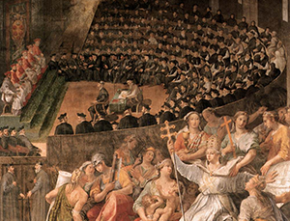
The Catholic Church’s Council of Trent, prompted by the Protestant Reformation, issued condemnations of what it defined to be heresies committed by Protestants. The Council issued key statements and clarifications of the Church’s doctrine and teachings, including scripture, sacred tradition, original sin, the sacraments, Mass and the veneration of saints.
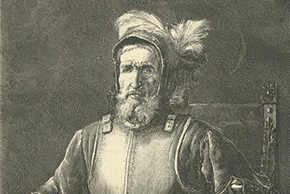
Miguel López de Legazpi, a colonial official in Mexico, Pacific explorer and conquistador, led the 1565 expedition that visited Guam on its westward voyage from Mexico to Cebu in the Philippines. Legazpi claimed Guam for Spain, and was later granted possession of Guam and Rota by the Spanish King Philip II.
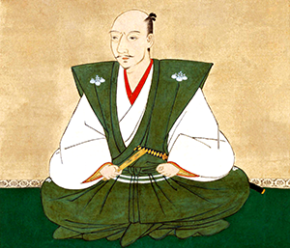
Oda Nobunaga, a powerful feudal lord of Japan in the late 16th century, attempts to unify Japan during the late Sengoku period (Age of the Warring States), and gains control over most of Honshu. Nobunaga is regarded as one of three unifiers of Japan.
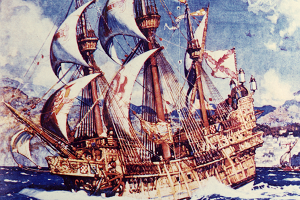
The Manila Galleon (“Nao de China” or “Nao de Acapulco”) brings porcelain, silk, ivory, spices, and myriad other exotic goods from China to Mexico via Manila in exchange for New World silver. The Galleons stopped in the Marianas on the return trip to Manila, once or twice a year.
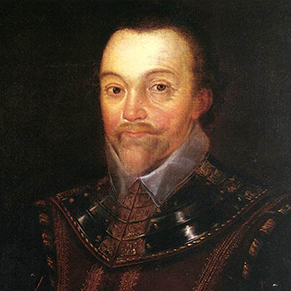
Francis Drake, an English sea captain, privateer, slave trader, naval officer and explorer, was knighted for plundering Spanish ships and towns. He was the second explorer to circumnavigate the world in a single expedition, and was the first to complete the voyage as captain.
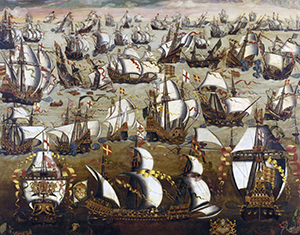
The Spanish Armada, a fleet of 130 ships, tries to overthrow England and the establishment of Protestantism in 1588. The attack was Spain’s attempt to stop English interference in the Spanish Netherlands and the harm caused to Spanish interests by English and Dutch privateering. The armada was defeated, however, losing one third of the ships.
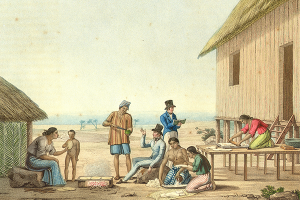
Franciscan lay brother Fray Juan Pobre de Zamora deserts a ship off the shores of Rota on his way to Manila. Although he was only in the Mariana Islands for seven months, he provided an invaluable historical contribution through descriptive written accounts of the lives, customs, and culture of CHamorus in the early 17th century.
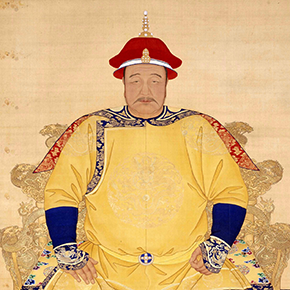
The Qing dynasty is established, becoming the last imperial dynasty of China. It ruled China until 1912, when it was succeeded by the Republic of China. It lasted for almost three centuries and formed the territorial base for modern China. It was the fourth largest empire in world history.
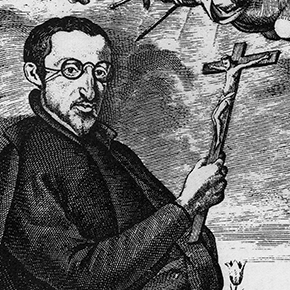
Padre Diego Luis de San Vitores, a Jesuit, brought Christianity to the Marianas in 1668. He was killed on Guam just a little less than four years after his arrival, a death he welcomed because he would be considered a martyr in his efforts to spread Christianity.
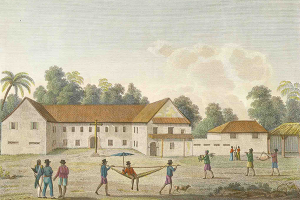
The Colegio de San Juan de Letrán, a boy’s school or seminary, is established in 1669 in Hagåtña by Father Diego Luis de San Vitores, the Jesuit priest who started the first Catholic mission in the Marianas. It was still in existence in 1899 when the Americans claimed the island.
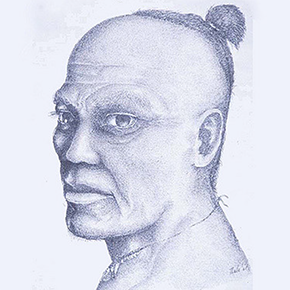
Hurao, a Hagåtña CHamori (high caste) who, with the backing of the village makanas (spiritual leaders), was key in instigating a major battle. He rallied 2,000 CHamoru warriors to take up arms. This battle was the first mass movement by CHamorus against the Spanish.
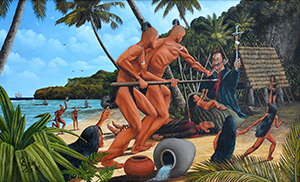
Matå’pang from Tomhom (Tumon) killed Father Diego Luís de San Vitores, the Spanish priest who brought Christianity to the Marianas. At first a Christian convert, Matå’pang rejected Christianity because he saw that it was being used as a tool to control his people and obliterate CHamoru traditions and beliefs.
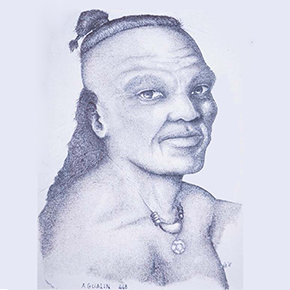
Agualin (or “Aguarin”) was a CHamoru chief who led several revolts against the Spanish. He was from Hagåtña, but traveled from village to village to inspire other CHamorus to fight Spanish colonialism and Catholicism.
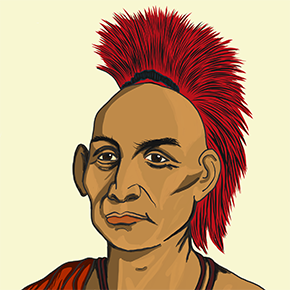
Chief Metacom, of the Wampanoag people, stood up to the British colonists in America. Metacom used his tribal alliances to coordinate efforts to push European colonists out of New England. Conflicts over land use, diminished game as a consequence of expanding European settlement, and other tensions, were behind their dissatisfaction.
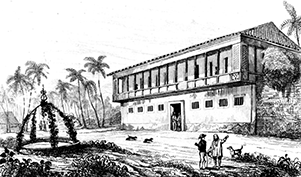
Spanish Captain Antonio Saravia was appointed the first official Military Head Commander (later governor) of Guam upon the authority of King Charles II of Spain. One of Saravia’s first acts was to persuade all the CHamoru leaders to take and sign an oath of allegiance to Spain.
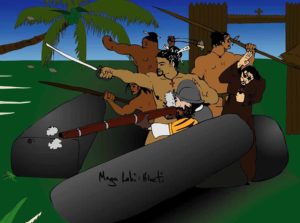
Hineti by Raph Unpingco.
Hineti, a clan leader from Sinajana, chose to protect the Spanish in hopes of improving his personal status and gain power. Hineti defended the Spanish against CHamoru revolts, and is most known for curbing a CHamoru uprising in Hagåtña in 1684.
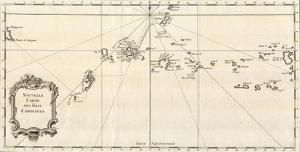
Spanish explorer Francisco Lazcano named Chuuk, Kosrae, Palau, Pohnpei, and Yap “Islas de Carolinas” after King Carlos II of Spain. For about 300 years after this, explorers passed by having little contact with islanders.
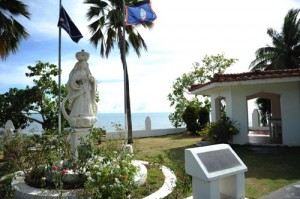
Santa Marian Kamalen statue is found in Merizo after the galleon Nuestra Señora del Pilar shipwrecked off Cocos Island.
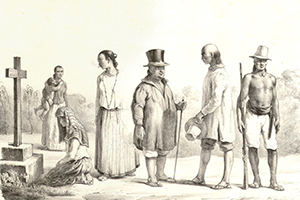
Priests working to convert CHamorus to Christianity are met with resistance. CHamorus accept some but not all of their teachings. Once Padre San Vitores is killed, soldiers are brought to subdue the uprising. Many are killed. A last battle a Aguijan ends in defeat and the Spanish gain control over the Marianas.
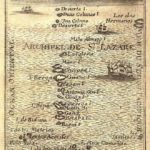
Map of the Marianas, 1605. Donald Rubinstein collection.
CHamorus fought the Spanish for control of the Marianas for almost 30 years. At the same time introduced diseases were taking their toll on people as they had no resistance to diseases. After the rebellion was quelled the Spanish forced CHamorus from the northern islands to relocate to Guam and Rota.
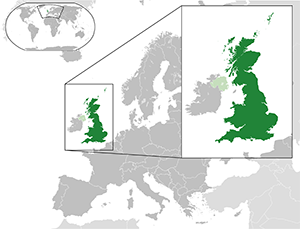
The Acts of Union, passed by the English and Scottish Parliaments in 1707, led to the creation of the United Kingdom of Great Britain. The UK Parliament met for the first time in October 1707.
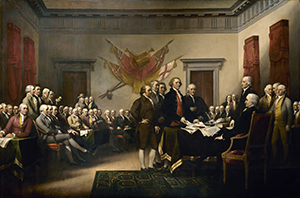
This declaration announced that the 13 colonies at war with the Kingdom of Great Britain would regard themselves as no longer under British rule. With the declaration, these new states took a collective first step toward forming the United States of America. It has become a well-known statement on human rights.
